MALTESE CROSS
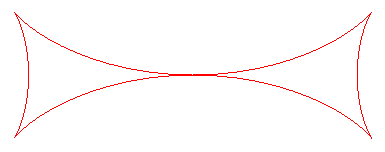
| next curve | previous curve | 2D curves | 3D curves | surfaces | fractals | polyhedra |
MALTESE CROSS

| Curve studied by W. H. Besant in 1870, M. d'Ocagne in
1884, and W. Gaedecke in 1917.
Other name : bow tie. |
| Cartesian parametrization: Cartesian equation: Rational sextic. Cartesian parametrization in a frame turned by p/4: Length: |
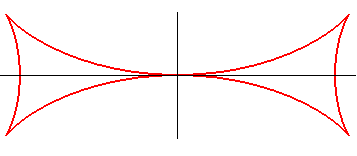 |
| The Maltese cross (that should rather be called
half of a Maltese cross) is characterized by the fact that the point
T is the middle of the segment line [ON] (T being
the intersection point between the tangent and Ox, N the
one between the normal and Ox - see the notations);
this leads to the differential equation: If H is the projection of O on the tangent, then |
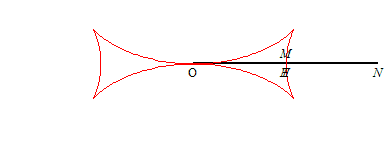 |
| The Maltese cross is the envelope of a line perpendicular
at the extremity to a segment line of constant length the ends of which
move on two perpendicular lines (the enveloping segment is an astroid).
See this property stated in 1884 in the Nouvelles Annales
de Mathématiques p. 559:
|
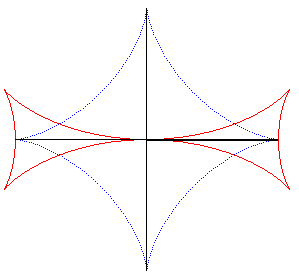 |
| The Maltese cross is also one of the involutes
of the astroid (figure on the left),
and, therefore, one of its parallel curves (figure on the right). |
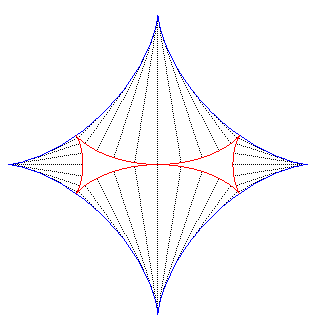 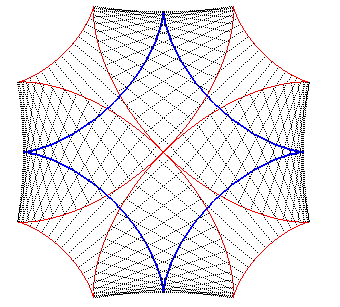 |
| The pedal of the Maltese cross with respect to its centre is the double egg. | 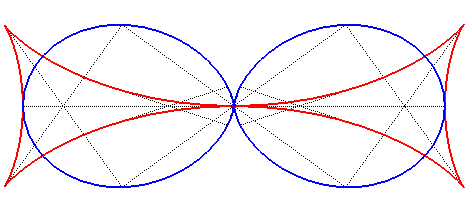 |
Its orthoptic
curve is the cornoid.

A non-mathematical Maltese cross... |
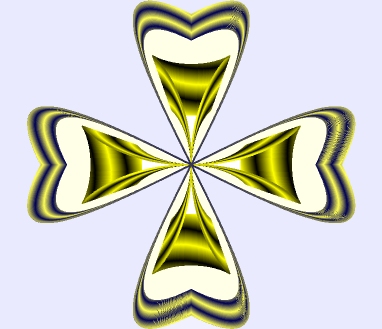
...and an embroidery from a Maltese cross designed by Daniel Alexis |
| next curve | previous curve | 2D curves | 3D curves | surfaces | fractals | polyhedra |
© Robert FERRÉOL 2017